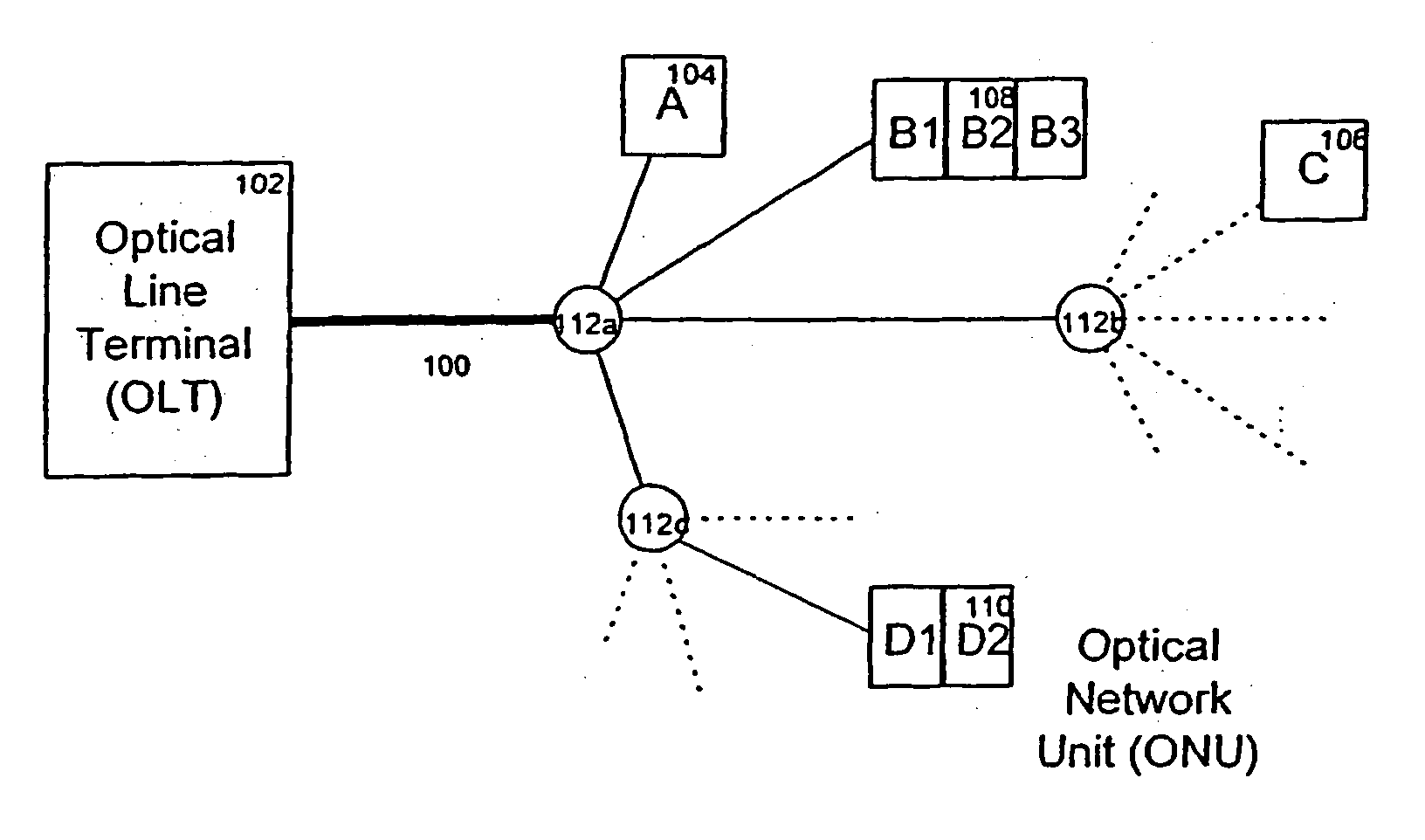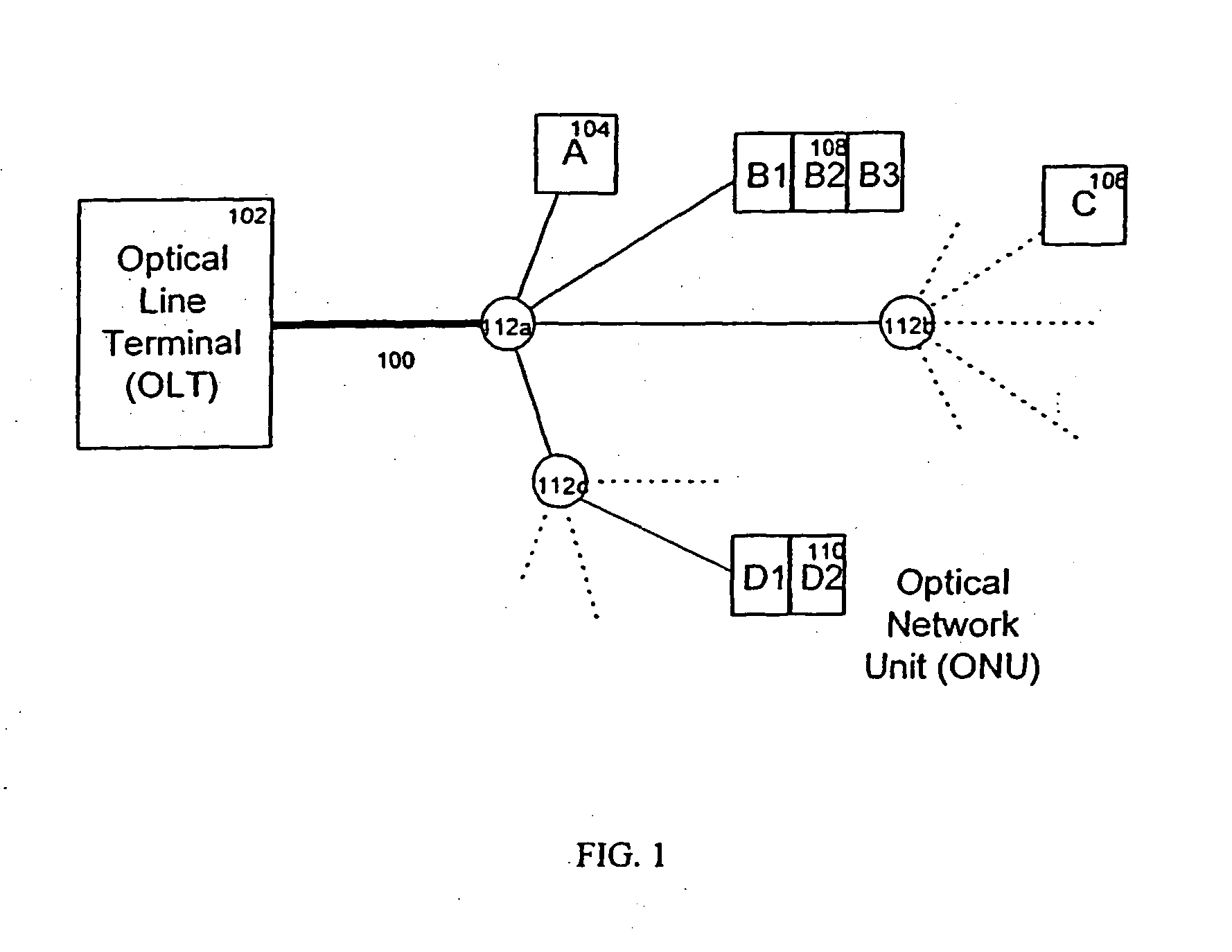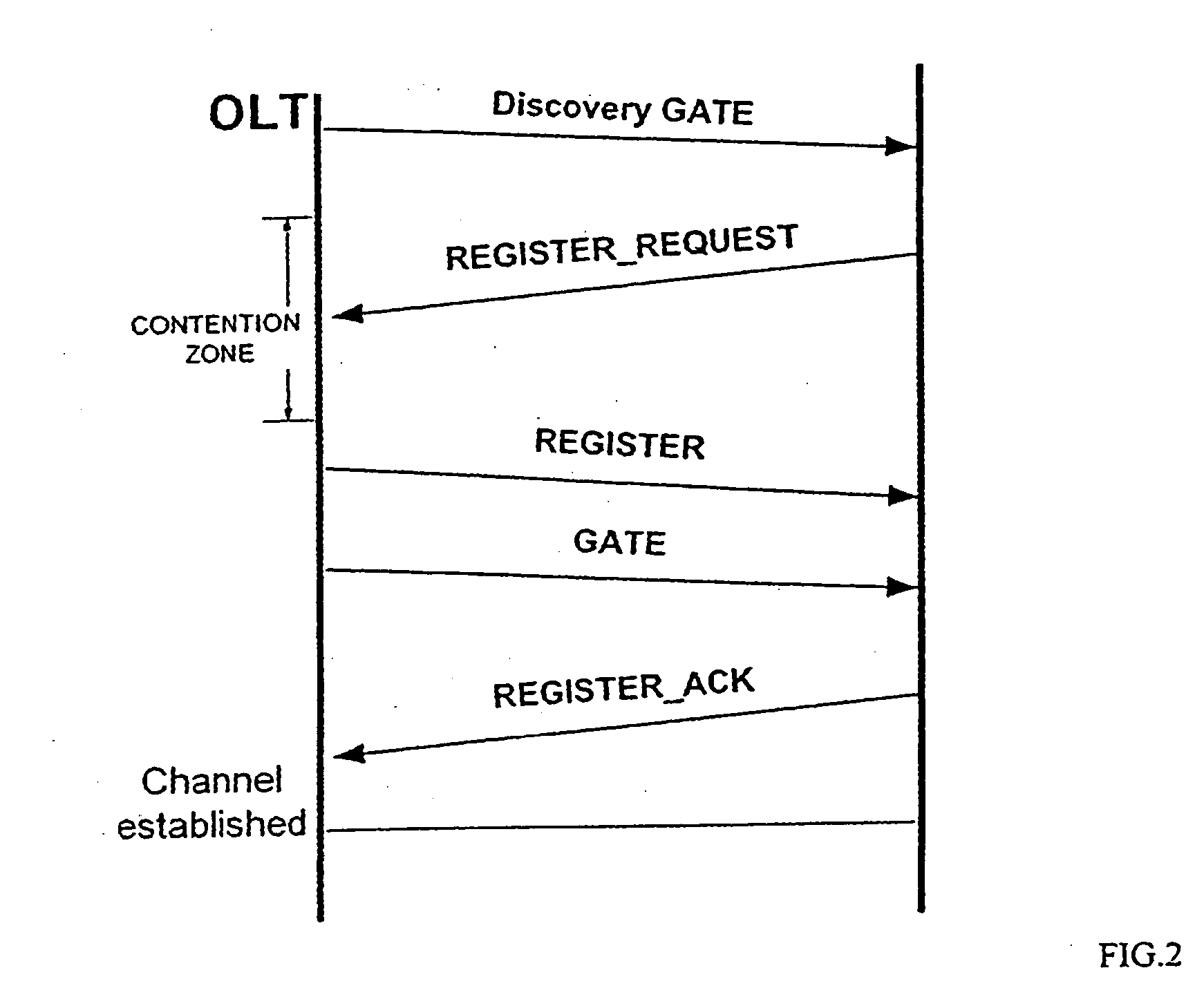Operations method in an ethernet passive optical network that includes a network unit with multiple entities
a passive optical network and network unit technology, applied in the field of data access systems, can solve the problems of increasing uplink traffic, reducing network utilization, traffic has to go, etc., and achieve the effect of improving data flow control
- Summary
- Abstract
- Description
- Claims
- Application Information
AI Technical Summary
Benefits of technology
Problems solved by technology
Method used
Image
Examples
first embodiment
[0037] the multiple entity ONU registration method of the present invention is to repeat the registration process of FIG. 2 several times, each time with a different Media Access Control (MAC) Address, which uniquely identifies each entity. The method is simple and does not require any knowledge from an OLT, which can be standard compliant, without enhancements. That is, the OLT will regard each entity as a different physical entity. The OLT can register an unlimited amount of physical devices, but is not able to discern that different entities belong to the same single ONU.
second embodiment
[0038] the multiple entity ONU registration method of the present invention is shown in FIG. 4. In this embodiment, the ONU can register an additional entity on top of the existing one(s). While the process described in FIG. 4 relates to a single additional entity, it is clear that the process can be repeated several times to add multiple entities. The ONU uses one of its granting opportunities to transmit a REGISTER_REQ message with the ONUs own MAC address. The OLT receives this message in step 400. In step 402, the OLT checks whether the REGISTER_REQ message was received during a discovery grant opportunity (or simply “discovery grant”), or during a normal (“non-discovery”) grant opportunity (or simply “normal grant”). If the message was received during normal grant (“No”), then the OLT concludes that the ONU is already registered, and that the ONU wants to add an additional entity. The registration process of an additional entity for the same ONU by the OLT, based on the standar...
third embodiment
[0039] the multiple entity ONU registration method of the present invention is shown in FIG. 5. It is based on using a reserved value between 4 and 255 of a flags field inside the REGISTER_REQ message, as explained below. The OLT receives a REGISTER_REQ message from an ONU in step 500. In step 502, the OLT checks the reserved value of the flags field, i.e. if the flags field marks an additional registration. If the reserved value is a new value defined for the additional registration, typically 5, the OLT concludes that this entity is an additional entity for the same ONU. Consequently, the OLT completes the registration process, using the standard flow depicted on FIG. 2, in step 504. If the flags value is 1, i.e. it indicates a first registration (“No”), then in step 506 the OLT deletes all the entities previously registered for this ONU, because no other entities should be registered if this is the first registration. The OLT then continues the process of registration in step 508...
PUM
 Login to View More
Login to View More Abstract
Description
Claims
Application Information
 Login to View More
Login to View More - R&D
- Intellectual Property
- Life Sciences
- Materials
- Tech Scout
- Unparalleled Data Quality
- Higher Quality Content
- 60% Fewer Hallucinations
Browse by: Latest US Patents, China's latest patents, Technical Efficacy Thesaurus, Application Domain, Technology Topic, Popular Technical Reports.
© 2025 PatSnap. All rights reserved.Legal|Privacy policy|Modern Slavery Act Transparency Statement|Sitemap|About US| Contact US: help@patsnap.com



